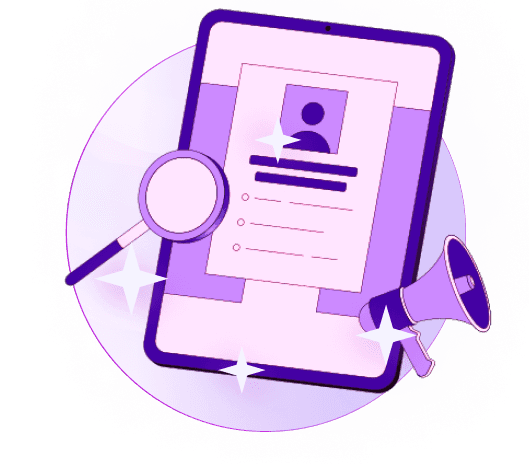Blogs
Articles

Lead Management Workflow: How to Build an Effective Process
Did you know that responding to leads within five minutes makes you 100X more likely to book a meeting?
Timing plays a crucial role in converting prospects into customers. Most businesses struggle with slow lead handling processes that let potential revenue slip through the cracks. Our research shows that combining scheduling with forms can boost lead response time by a staggering 240X.
B2B companies face this challenge more intensely. Their average sales cycle stretches to 60 days, making every interaction in the lead management workflow critical. A well-laid-out lead flow process starts the moment prospects engage with your marketing materials. This systematic experience takes them from the original capture phase straight through to final onboarding.
The best part? A successful lead management workflow doesn't need complexity it just needs purpose. The process includes ten key stages such as capture, enrichment, qualification, routing, and scheduling. Each stage nurtures leads toward conversion.
This piece breaks down the exact steps to build a B2B lead management process that delivers quick responses, qualifies leads effectively, and converts consistently. These proven strategies will revolutionize your business's approach to its most valuable asset potential customers. This applies whether you're improving your current system or building one from scratch.
Understanding the Lead Management Workflow
Lead management workflow helps track and manage potential customers from their first interaction until they make a purchase. This well-laid-out approach has multiple stages that guide prospects through the sales trip. A lead management flow creates a repeatable pathway that gives consistent lead handling and higher conversion rates, unlike random sales activities.
The standard lead management process has several crucial stages. These stages start with lead capture through different channels and continue with data enrichment for complete profiles. The process moves through qualification to find sales-ready leads, routing to sales representatives, meeting scheduling, discovery calls, nurturing activities, proposal development, contract signing, and customer onboarding. Each stage builds on the previous one to create a seamless trip that turns interest into revenue.
What is a lead management flow?
Lead management flow provides a clear, step-by-step process that guides potential customers from the sales funnel's top through their conversion to paying customers. Sales teams use this organized process as a workflow to follow from the original contact to closed deal.
The process goes beyond tracking leads and actively shapes their progress through qualification, nurturing, and conversion phases to maximize every touchpoint's effect.
Why workflows matter in B2B lead management?
B2B lead management needs longer sales cycles, multiple decision-makers, and complex nurturing strategies compared to B2C processes. Research reveals that all but one of these prospects aren't ready to buy at any moment. A well-designed workflow helps identify ready-to-buy prospects while building relationships with the remaining 97% through targeted nurturing activities.
Key benefits of a structured lead flow process
A structured lead process offers remarkable advantages. Companies that excel at lead nurturing generate 50% more sales-ready leads at 33% lower cost. Organizations that implement automated lead management see at least 10% revenue increase within six to nine months.
Customers who feel understood through tailored experiences that address their specific pain points are 40% more likely to purchase. Sales teams can focus their efforts on the right leads with this workflow, which speeds up sales cycles and reduces time spent on prospects who might never convert.
The 8 Stages of a Lead Management Process

Five-stage lead generation funnel diagram showing traffic, lead capture, nurturing, value content, and high-quality leads stages.
A sales pipeline works best when you understand how leads move from first contact to final sale. Here are ten key phases that make up a flexible lead management workflow.
Lead capture
The experience starts when you collect prospect information through website forms, social media, webinars, email campaigns, or paid advertising. This simple step gathers contact details and builds the foundation for future nurturing.Data enrichment
Simple lead information becomes more valuable with additional data. This step turns basic contact details into detailed profiles by adding firmographic data (company size, revenue), technographic information (software used), and behavioral indicators. Lead enrichment tools add accurate company and intent information to prospect records automatically and give a complete view of each potential customer.Lead qualification
Sales teams assess leads based on their buying potential. They evaluate prospects against set criteria like budget, authority, need, and timeline to check if they're ready to buy. Lead scoring gives numerical values to contacts based on fit and engagement, which helps teams focus on promising opportunities.Lead routing
The right sales representatives get qualified leads based on territory, product interest, industry, or other factors. Quick and efficient routing connects leads with team members faster and cuts down response time.Meeting scheduling
Prospects can book time with sales representatives directly. Scheduling tools remove the need for multiple emails and help arrange meetings when interest peaks.First discovery call
This vital conversation helps sales teams learn about the prospect's needs, challenges, pain points, and how they make decisions. Discovery calls reveal motivations that drive sales while building trust.Follow-up and nurturing
Most leads need time before they convert. Sales teams stay connected through targeted messages and helpful content. Good lead nurturing provides relevant educational material that solves problems.Proposal and second meeting
Qualified prospects receive custom proposals that match their needs. Sales teams create personalized offers and present them in follow-up meetings. Automated proposal software cuts administrative costs by up to 30%.Contract signing
Prospects ready to move forward turn proposals into binding agreements. Modern contract tools make this step smooth with electronic signatures, approval workflows, and tracking features.Onboarding
New customers need help implementing your solution. Good onboarding creates an easy switch from prospect to customer and builds long-term success. Customers feel confident about their choice when onboarding goes well.
How to Build Your Lead Management Workflow?
A well-planned lead management workflow works better than piecing things together as you go. Companies that implement proper lead management systems see their sales velocity improve. Their teams work better together and conversion rates go up.
Identify and map lead sources
Your prospects' origins are the foundations of any lead workflow. You need to track lead sources of all types - organic search, paid advertising, social media, referrals, direct visits, email campaigns, mutually beneficial alliances, and events. This detailed tracking shows which channels bring high-value prospects and which ones just generate volume without quality.
To manage your sources better:
Use standard naming rules across all marketing channels
Group sources by channel or intent level
Add metadata tags to source data for better segmentation
Unite inconsistent entries to clean up reporting
Set up lead scoring and qualification rules
Lead scoring turns gut feelings into numbers you can measure by giving leads point values based on fit and engagement. Studies show companies that use lead scoring earn 138% more revenue than those without scoring systems.
Build a solid qualification framework by:
Setting clear criteria (demographics, firmographics, company size)
Creating behavior scores (website visits, email engagement)
Setting minimum scores that show sales-readiness
Building an ideal customer profile (ICP) to measure leads against
Design routing and assignment logic
Research shows you're seven times more likely to qualify prospects when you respond within five minutes. Smart routing makes this quick response possible. It automatically sends leads to the right team members based on set criteria.
The core team routing needs to think about:
Geographic territory or time zone arrangement
Product specialty or vertical expertise
Rep workload and availability
Account ownership for existing relationships
Automate follow-up and nurture sequences
Automation cuts out manual follow-up work while keeping communication customized. Marketing automation can boost qualified leads by 451%. Persana helps build nurture sequences that respond to what prospects do right away.
Good automation needs:
Welcome emails (they get 4x higher open rates than regular messages)
Content customized to match interest signals
Multiple channels working together - email, SMS, and calls
Measuring and Optimizing Your Workflow
Your lead management workflow's success relies on knowing how to measure performance and make improvements.
Track sales velocity and conversion rates
Sales velocity shows how quickly you turn leads into revenue.
The formula is: number of opportunities × average deal size × conversion rate ÷ sales cycle length.
Any improvement to these components will boost your overall velocity. You can add more opportunities, increase deal sizes, improve conversion rates, or shorten your sales cycle.
Monitor lead-to-revenue process KPIs
Your key metrics should include conversion rates that show what percentage of leads become customers, customer acquisition cost, and lead qualification metrics like MQLs and SQLs. On top of that, tracking customer lifetime value will help you review your business model's future potential.
Reduce manual tasks with automation
Automation changes lead management by bringing together data from channels of all types. It removes repetitive tasks from your workflow. Companies that use marketing automation create up to 451% more qualified leads compared to those who don't. The system will give tailored engagement to leads at every funnel stage and lower the chances of human error.
Review LTV:CAC ratio for long-term ROI
The LTV:CAC ratio compares customer lifetime value against acquisition cost to show your return on customer investments. A healthy measure for this ratio is 3:1 - your customers should bring in three times more value than what you spend to acquire them. A ratio under 1.0 points to monetization issues, while anything above 5.0 suggests room for growth.
Think over using Persana to track these metrics and streamline your lead workflow.
Conclusion
Lead management workflows are the foundations of successful B2B sales processes. In this piece, we looked at how a systematic approach to handling potential customers can boost conversion rates and speed up sales cycles. The numbers tell the story - you're 100X more likely to book meetings when you respond within five minutes. Good lead nurturing gets you 50% more sales-ready leads at much lower costs.
Our eight-stage process gives you a clear path to turn interested prospects into loyal customers. The experience from lead capture to qualification, nurturing, and conversion needs careful planning. Mapping your sources, using scoring systems, creating smart routing logic, and automating follow-ups are must-have steps in your process.
Your lead management strategy needs constant measurement to improve. Sales velocity metrics, conversion rates, and the LTV:CAC ratio help you learn about how well your process works. Regular evaluation lets you spot bottlenecks and areas to improve.
The gap between struggling sales teams and top performers often comes down to how well they stick to their workflows. Time spent building structured lead management processes pays off through better efficiency, improved customer experiences, and higher revenue.
Note that your lead management workflow doesn't need complexity. It just needs to be purposeful, steady, and quick to respond to what prospects need. These strategies will help you turn more potential into profit when you start using them today.
Key Takeaways
Building an effective lead management workflow transforms scattered sales activities into a systematic revenue-generating machine that consistently converts prospects into customers.
• Speed matters most: Responding to leads within 5 minutes makes you 100X more likely to book meetings and 7X more likely to qualify prospects.
• Structure drives results: Companies with proper lead management workflows generate 50% more sales-ready leads at 33% lower cost than unstructured approaches.
• Automation accelerates growth: Businesses implementing marketing automation see 451% more qualified leads and at least 10% revenue increase within 6-9 months.
• Track the right metrics: Monitor sales velocity, conversion rates, and LTV:CAC ratio (ideal 3:1) to optimize your workflow performance continuously.
• Follow the 10-stage process: Lead capture → data enrichment → qualification → routing → scheduling → discovery → nurturing → proposal → contract → onboarding creates a repeatable path to revenue.

Create Your Free Persana Account Today
Join 5000+ GTM leaders who are using Persana for their outbound needs.
How Persana increases your sales results
One of the most effective ways to ensure sales cycle consistency is by using AI-driven automation. A solution like Persana, and its AI SDR - Nia, helps you streamline significant parts of your sales process, including prospecting, outreach personalization, and follow-up.



